Have you ever felt the urge to plunge recklessly into a rigorous workout, foregoing the crucial warm-up? You’re not alone in this sentiment – many shares it.
However, allow me to emphasize that your body deserves far better.
Whether you’re taking your initial strides toward a healthier lifestyle or you’re a seasoned fitness aficionado, keen on conquering novel pinnacles of physical prowess, mastering your warm-up routine holds transformative potential.
So, before you embark on those demanding pull-ups, push-ups, and squats, let’s embark on an exploration of the dynamic realm of warm-up exercises – the clandestine ingredient that elevates your performance, safeguards you from injuries, and turbocharges the incineration of calories.
Brace yourself to unlock a compendium of twelve incredibly potent warm-up exercises that will elevate the gratification of you calisthenics routines to unprecedented levels, while simultaneously laying the foundation for the triumphant realization of your weight loss objectives.
Let’s take the plunge and furnish your workouts with the warm-up they unequivocally merit. The Significance of Engaging in Warm-Up Exercises.
Benefits of Combining Calisthenics and Warm-Up for Weight Loss
Let’s break down the amazing benefits of combining calisthenics and a solid warm-up routine for turbocharged weight loss.
Fires Up the Metabolism:
When you kickstart your calisthenics session with a strategic warm-up, you’re priming your body to rev up its metabolic engine.
Studies, like the one published in the “Journal of Strength and Conditioning Research,” show that an effective warm-up can enhance calorie burn during and after exercise.
So, your warm-up isn’t just a ritual – it’s a scientific key to stoking that fat-burning furnace!
Boosts Workout Performance:
Ever felt like your first set of squats was just a tad lackluster? That’s where the magic of a dynamic warm-up comes in.
Experts like fitness guru Rebecca Louise emphasize that a proper warm-up enhances blood flow to your muscles, improving their flexibility and contractibility.
This translates to improved performance in your calisthenics routine, helping you push harder and accomplish more.
Reduces Injury Risks:
Nobody wants to be sidelined by an injury, right? Incorporating a tailored warm-up routine decreases the risk of strains and sprains.
According to the “Journal of Applied Sports,” an effective warm-up primes your joints and soft tissues, making them more resilient to the demands of calisthenics.
Bloggers and fitness advocate Mark Sisson also underscores the importance of injury prevention through proper warm-ups.
Activates the Mind-Muscle Connection:
It’s not just about physical prep – your mind gets a boost too. A warm-up helps you mentally transition from your daily grind to focused workout mode.
Fitness blogger Nia Shanks highlights how a dynamic warm-up enhances the mind-muscle connection, allowing you to engage the right muscles more effectively during your calisthenics routine.
Improves Flexibility and Range of Motion:
Remember those impressive handstands you’ve been eyeing?
A well-structured warm-up routine, as endorsed by the American College of Sports Medicine, gradually improves your flexibility and range of motion.
This lays the groundwork for mastering advanced calisthenics moves and ensures you’re working through a full range of motion for maximum muscle engagement.
Consistency Booster:
By establishing a warm-up routine as a non-negotiable part of your exercise session, you’re setting yourself up for long-term success.
Consistency is key to any weight loss journey, and an engaging warm-up can be your secret weapon for staying on track.
Elevates Post-Exercise Oxygen Consumption (EPOC):
The fancy term, big benefits.
Research published in the “European Journal of Applied Physiology” indicates that an intense warm-up can contribute to a prolonged EPOC phase – a fancy way of saying your body keeps torching calories even after you’ve finished sweating.
So, that extra effort you put into warming up? It keeps on giving.
Warm-up exercises for calisthenics and weight loss
Are you prepared to invigorate your body and unlock a world of improved flexibility and mobility?
Before you dive into your workout, take a moment to indulge in a dynamic warm-up routine that will awaken your muscles and elevate your exercise experience.
Here’s a step-by-step guide to a variety of exercises that will help you achieve just that:
Jumping Jacks Reimagine
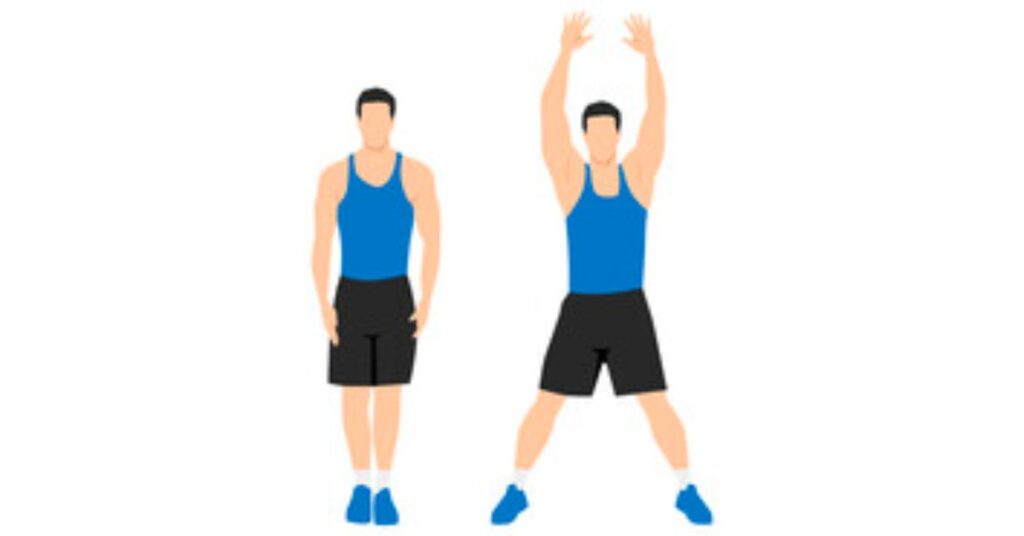
Embrace the energy of jumping jacks, a fantastic cardiovascular warm-up exercise that kickstarts your heart rate and readies your body for action. Let’s break down the steps:
- Stand tall, feet together, and arms rest naturally by your sides.
- Engage your core and maintain a posture that radiates confidence.
- With a burst of energy, jump, spreading your feet wide as your arms soar overhead.
- In mid-air, let your feet extend beyond hip-width while your arms form a parallel line with the ground.
- As you land, absorb the impact by bending your knees slightly.
- Swiftly reverse the movement, returning to the starting position as your feet gather and your arms descend.
- Repeat this rhythmic motion for a set time or specific repetitions. Focus on a controlled rhythm, arm extension, and soft landings for optimal impact.
Elevate Your Workouts with High Knees
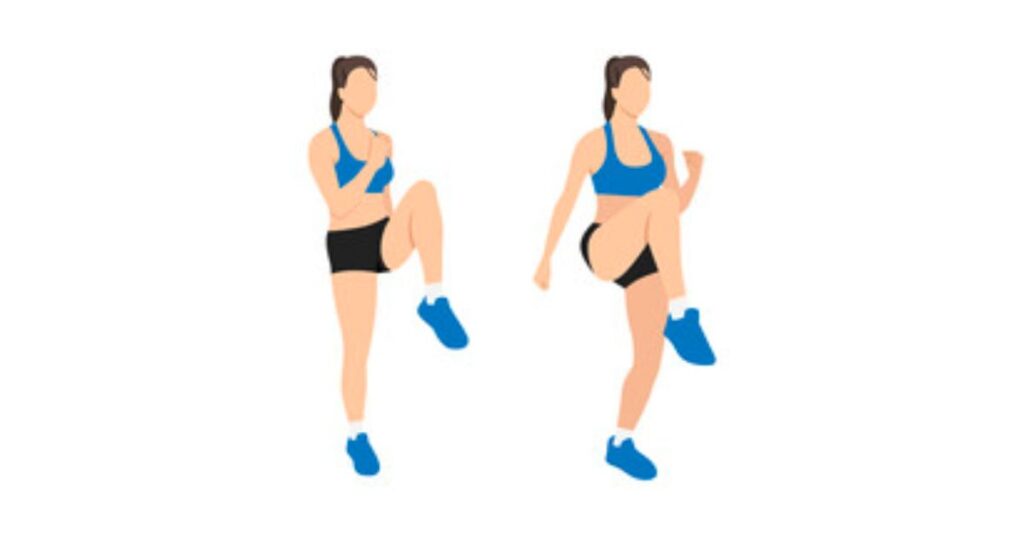
Energize your cardiovascular system with high knees, a dynamic warm-up exercise that engages multiple muscle groups. Here’s how to do it:
- Stand tall, feet hip-width apart, and arms at ease by your sides.
- Lift your right knee high toward your chest while simultaneously raising your left arm.
- Gently lower your right leg and repeat the movement with your left knee and right arm.
- Maintain a swift pace, alternating knee lifts, and arm swings in a harmonious rhythm.
- Strive to raise each knee at least parallel to the ground, engaging your core for stability.
- Keep your upper body relaxed, shoulders down, and upper back tension-free.
- Embrace the rhythm and the spring in your step, and keep those knees pumping for the desired duration or repetitions.
Kick It Up with Butt Kicks
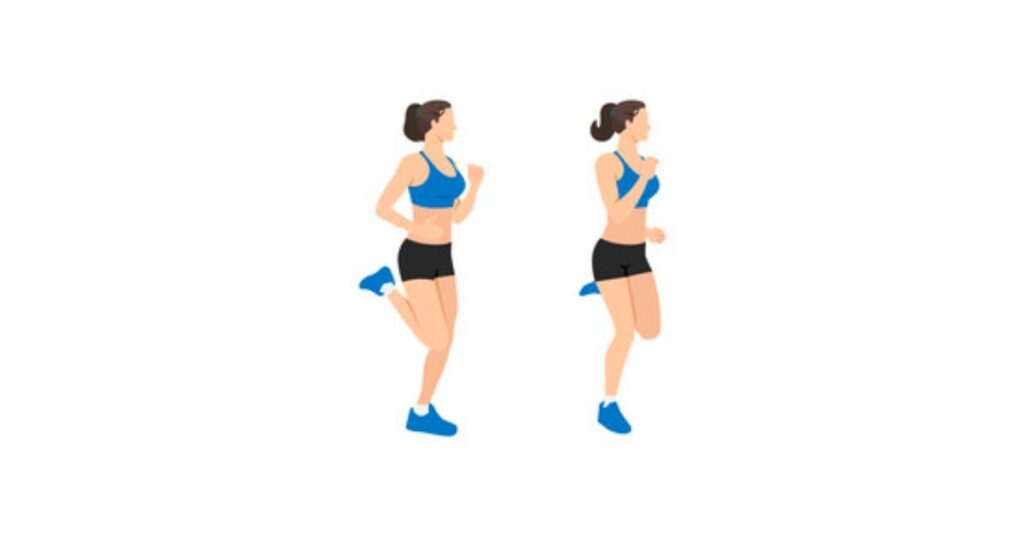
Experience the invigorating power of butt kicks, a dynamic cardiovascular warm-up exercises those homes in on your lower body muscles, particularly the hamstrings. Follow these steps for a revitalizing experience:
- Stand tall, feet hip-width apart, and arms casually relaxed at your sides.
- Begin a light jog in place, lifting your right heel towards your glute.
- As your heel approaches or touches your glute, swiftly return your leg to the ground.
- Continue the motion with your left leg, maintaining a rhythmic jogging pace.
- Enliven your lower body by alternating between right and left leg kicks.
- Ensure fluid flows as your heels kiss your glutes with each step.
- Engage your core to stabilize your movement and immerse yourself in this rhythm. Continue for your chosen duration or repetitions.
Revitalise Your Body with Jumping Rope
Unleash the power of jumping rope, a dynamic cardiovascular warm-up exercise that syncs coordination, accelerates heart rate, and ignites various muscle groups. Here’s how to soar to new heights:
- Hold the jump rope handles in each hand, allowing the rope to trail behind you.
- Stand confidently with feet together and shoulders relaxed.
- Initiate the motion by swinging the rope over your head and in front of your body, tracing an elegant arc.
- As the rope nears the ground, leap off both feet, creating ample space for the rope to pass beneath.
- Gently land on the balls of your feet, knees slightly bent for a cushioned landing.
- Sustain the rhythm by coordinating wrist movement and jump timing.
- Embrace the tempo and your flow as you leap to new heights. Maintain an upright posture, engage your core, and breathe naturally. Continue this rhythmic dance for the preferred duration or repetitions.
Neck Rotations: Nurturing Your Flexibility
Begin your joint mobility journey with neck rotations, an exercise that nurtures flexibility and relieves tension in the neck and upper back. Follow these steps for a soothing experience:
- Sit or stand comfortably, spine erect, and shoulders at ease.
- Gently lower your chin to your chest, allowing a forward bend of your neck.
- Gradually rotate your head to the right, guiding your right ear towards your right shoulder.
- Pause briefly, feeling the gentle stretch on the left side of your neck.
- Return your head to the center and pivot it to the left, inviting your left ear to your left shoulder.
- Experience another fleeting stretch on the right side of your neck.
Embrace the fluidity of this motion, listening to your body’s cues. Perform rotations on both sides, ensuring a calm and controlled pace. Relax your jaw and facial muscles while you breathe deeply.
Arm Circles: Unleash Your Shoulder Mobility

Revitalize your joint mobility by integrating arm circles into your regimen. This straightforward yet impactful exercise contributes to enhancing shoulder flexibility and expanding the range of motion. Follow these steps to commence this expedition:
- Stand erect, with feet spaced at shoulder width, and extend your arms parallel to the ground.
- Initiate with petite circles, guiding your arms forward with a controlled and intentional movement.
- Gradually amplify the circle’s dimensions while preserving a seamless and rhythmic cadence.
- Embrace the sensation as your arm circles evolve into more expansive orbits around your form.
- Upon concluding the forward circles, transition seamlessly to executing circles in the opposite direction.
- Maintain engagement of your shoulder muscles throughout the motion, all the while upholding proper posture.
- Sustain the unbroken flow of the movement, sidestepping any abrupt or uneven shifts.
- Uphold a relaxed and innate rhythm as you embark upon this cyclical odyssey.
Leg Swings: Unleash Hip Flexibility
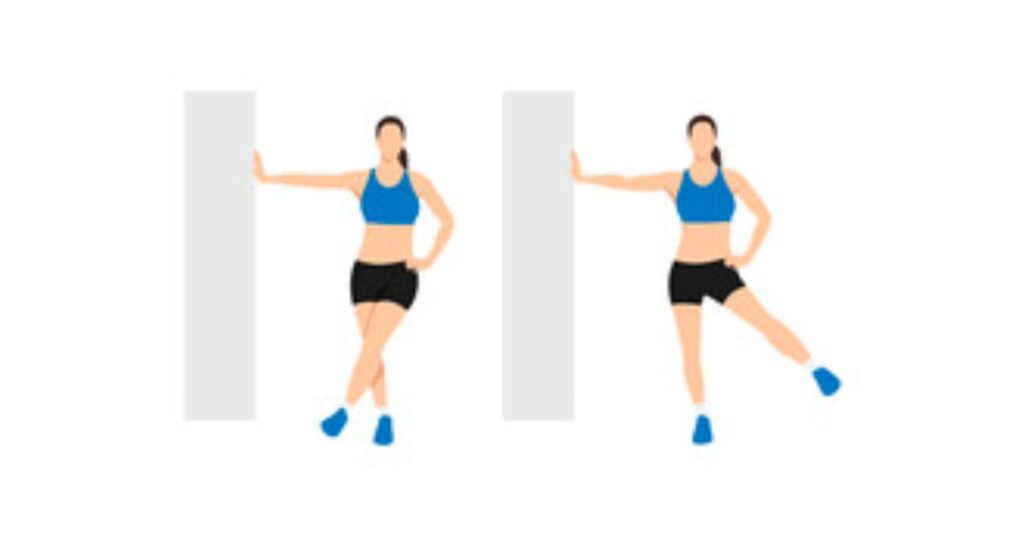
- Discover the liberation of leg swings, an exercise that unleashes hip flexibility and leg range of motion. Here’s your guide to fluidity:
- Find a stable support, such as a wall or bar, for balance.
- Stand tall, feet hip-width apart, and hands on your chosen support.
- Shift your weight to one leg and allow the other to relax.
- Swing your free leg forward and backward, embracing the motion.
- During the forward swing, extend your leg as high as comfortable.
- Embrace the sensation of the backward swing, focusing on the hamstring stretch.
Embrace the rhythm of the swings, gradually increasing their amplitude. Engage your core for stability, and ensure your upper body remains poised throughout the exercise.
Ankle Rolls: Nurture Ankle Flexibility
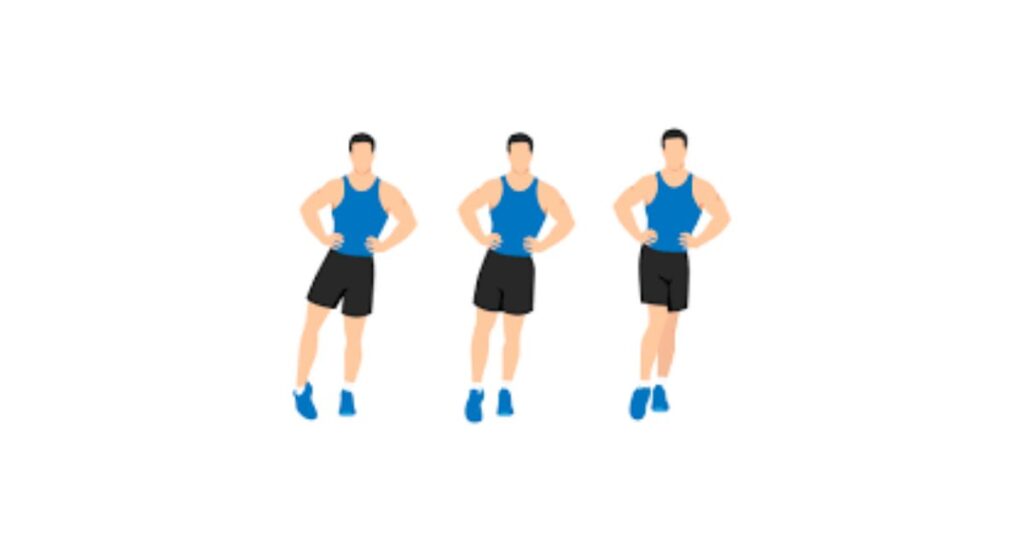
Experience the enchantment of ankle rolls, an exercise that nurtures ankle flexibility and mobility. Here’s how to engage in this soothing ritual:
- Sit on a chair or find a comfortable seated position with both feet grounded.
- Lift one foot off the ground, keeping the heel stationary.
- Begin by gently rotating the ankle clockwise, tracing a circular motion.
- Partake in several graceful clockwise rotations.
- Once complete, switch to counterclockwise rotations.
- Nurture both ankles with this gentle movement.
- Immerse yourself in the serenity of this exercise, focusing on ankle movement and relaxation. Nurture your ankle joints, maintaining a steady and controlled pace.
Walking Lunges: A Stride Toward Flexibility

Elevate your stretching routine by incorporating walking lunges. This dynamic exercise targets lower body flexibility and strengthens leg muscles. Follow these steps for graceful execution:
- Begin by standing tall with your feet hip-width apart. Place your hands on your hips or by your sides.
- Step forward with your right leg, creating a 90-degree angle at both knees. Ensure proper alignment by keeping your front knee over your ankle.
- Lower your body by bending both knees, maintaining alignment, and keeping your core engaged.
- Push off with your back foot to transition into the next lunge, this time leading with your left leg.
- Maintain core engagement and balance as you stride purposefully.
- Focus on impeccable form and depth with each lunge, ensuring your movements are controlled and precise.
- Embrace the fluid rhythm of walking lunges, allowing your leg muscles and core to work together for stability as you move.
- To amplify the suppleness of your legs, integrate leg swings into your regimen. This activity fosters flexibility and maneuverability in the hamstrings, hip flexors, and adductors. Follow these steps to execute leg swings:
- Discover a sturdy support like a wall or a bar to aid in maintaining balance.
- Stand tall, with feet spaced hip-width apart, and rest your hands on the chosen support.
- Shift your body weight onto one leg, allowing the other leg to ease into relaxation.
- Initiate a pendulum-like motion with your unburdened leg, oscillating it forward and backward while maintaining its straight alignment.
- Experience the gentle elongation during the forward swing, coupled with a subtle flexion during the backward swing.
- Employ your core muscles to sustain steadiness and a poised stance.
Embrace the fluidity inherent in the motion of leg swings, concentrating on the cadence while inviting the elongation.
Revitalize Hip Mobility with Hip Rotations
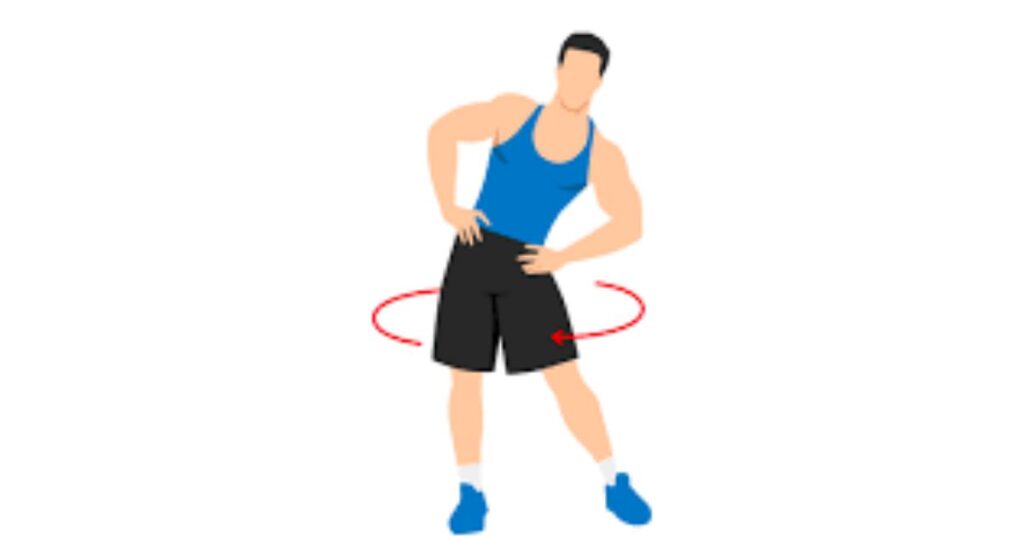
To elevate hip mobility, include hip rotations in your routine. This exercise enriches suppleness and grace in the hip joints. Follow these steps to perform hip rotations:
- Stand with feet set at shoulder width, and rest your hands on your hips.
- Engage your core muscles to uphold stability and an erect posture.
- Shift your weight onto one leg, allowing a slight flexion of the knee.
- Lift the opposing foot off the ground with gentleness, granting it a state of relaxation.
- Initiate a graceful circular movement with your hip, first outward, then rearward, inward, and finally forward.
- Savor the intrinsic rhythm of this movement, directing your attention toward the fluidity of the hip joint.
- Participate in this circular sojourn of hip rotations with a profound sense of rhythm and liberation, respecting the cues from your body and retaining control throughout the sequence.
Shoulder Circles
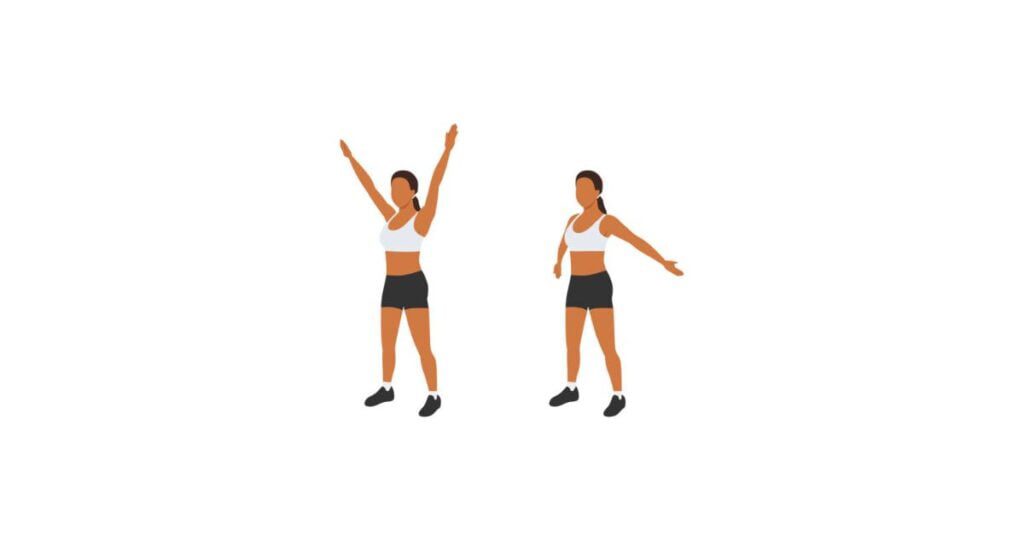
Shoulder circles present dynamic stretching exercises that effectively enhance shoulder mobility and flexibility. Their focus lies on the shoulder and upper back muscles, promoting a heightened range of motion and alleviating stiffness. Here is a step-by-step guide on executing shoulder circles:
- Begin by standing with your feet placed shoulder-width apart, allowing your arms to rest comfortably by your sides.
- Employ your core muscles to sustain an optimal posture throughout the duration of the exercise.
- Initiate the movement by elevating your shoulders toward your ears, then transition into a circular motion as you roll them back.
- Continuing the circular trajectory, engage your shoulder blades by drawing them together as your shoulders descend.
- Perform several circles in one direction before seamlessly reversing the motion to execute circles in the opposite direction.
- Maintain a fluid and controlled rhythm throughout the entirety of the exercise.
- Allow your breathing to occur naturally, avoiding the inclination to hold your breath.
- If preferable, you have the option to perform smaller or larger circles based on your comfort level.
- Should you encounter any discomfort or pain, adjust the range of motion accordingly or consult a healthcare professional.
Tips Effective Warm-up Exercises
You are on the verge of unlocking the ultimate guide to constructing a potent warm-up regimen tailored for your calisthenics and weight loss journey. Delve into transformative tips that will invigorate your spirit, enhance your concentration, and prepare you to triumph over pull-ups and squats:
Dynamic Movement Variety: Infuse vitality into your warm-up routine by integrating an assortment of dynamic movements. Just as a medley of fruits contributes to a wholesome smoothie, incorporating leg swings, arm circles, and hip rotations ensures that your muscles and joints receive a comprehensive wake-up call.
Nourishing with Nutrient-Rich Elixirs: Much akin to a nourishing juice cleanse, nourishing your body with appropriate nutrition before embarking on your warm-up. Opt for a balanced meal featuring lean proteins, wholesome fats, and complex carbohydrates (consider the likes of quinoa). This gluten and dairy-free dietary approach can furnish enduring energy for your calisthenics session.
Harmonizing with Intermittent Fasting: Should you practice intermittent fasting, contemplate aligning your workouts with your designated eating window. This strategic choice guarantees that your body possesses the necessary fuel for both your warm-up and calisthenics routine, minimizing energy slumps.
HIIT Burst Integration: Infuse bursts of high-intensity interval training (HIIT) into your warm-up routine. Like alternating between peaks and valleys, HIIT elevates your heart rate, primes your body for an impactful calisthenics session, and maximizes calorie consumption.
Plateau-Busting Preparation: If you find yourself at a crossroads in your weight loss journey, incorporate targeted warm-up exercises that address your areas of vulnerability. Comparable to reshuffling your workout regimen, modifying your warm-up routine can help shatter the confines of fitness plateaus.
Incorporating Aerobic Elements: Infuse a dash of aerobics into your warm-up routine. Activities such as jumping jacks and stationary jogging elevate your heart rate, ensuring efficient oxygen delivery to your muscles during calisthenics.
Mindful Macronutrients: Envision your warm-up as a composition of macronutrients for your physique. Incorporate movements that engage a spectrum of muscle groups, mirroring a balanced meal comprising proteins, carbohydrates, and fats for comprehensive nourishment.
Safeguarding Against Injury with Mobility Moves: Integrate mobility exercises to bolster joint health and suppleness. Just as prepping meals conserves time, dedicating a few extra minutes to mobility can forestall potential injuries during your calisthenics routine.
Encompassing Dynamic Stretching Magic: Favor dynamic stretching over static stretches within your warm-up. Analogous to savoring a keto smoothie, dynamic stretching gradually amplifies blood circulation and readies your muscles for the upcoming exertion.
Conclusion
To conclude, the incorporation of warm-up exercises into your fitness routine, whether geared toward calisthenics or weight loss, yields a multitude of advantages.
Empirical research underscores that effective warm-up exercises amplify performance, ignite calorie expenditure, mitigate injury susceptibility, optimize energy levels, transcend weight loss plateaus, and enhance mental concentration and mindset.
By incrementally elevating your heart rate and liberating your muscles from tension, warm-up exercises enhance overall performance during high-intensity workouts such as calisthenics and HIIT.
The inclusion of aerobic warm-up exercises catalyzes metabolism, facilitating calorie burn and weight loss. Furthermore, a meticulously structured warm-up regimen can heighten joint pliancy, elevate muscle elasticity, and activate stabilizing muscles, consequently curtailing the risk of exercise-related injuries.
Supplementing your body with suitable pre-workout nourishment during warm-up exercises heightens stamina, endurance, and overall performance, irrespective of your chosen dietary methodology.
Additionally, assimilating circuit training and calisthenics into your warm-up routine can surmount weight loss plateaus by invigorating muscle growth, augmenting metabolic demand, and igniting fat oxidation.
Finally, warm-up exercises offer a gateway to center your mind, boost motivation, and cultivate a positive mentality for the forthcoming workout.
By mentally preparing through warm-up exercises, you can enhance focus, and engagement, and ultimately attain enhanced weight loss outcomes.

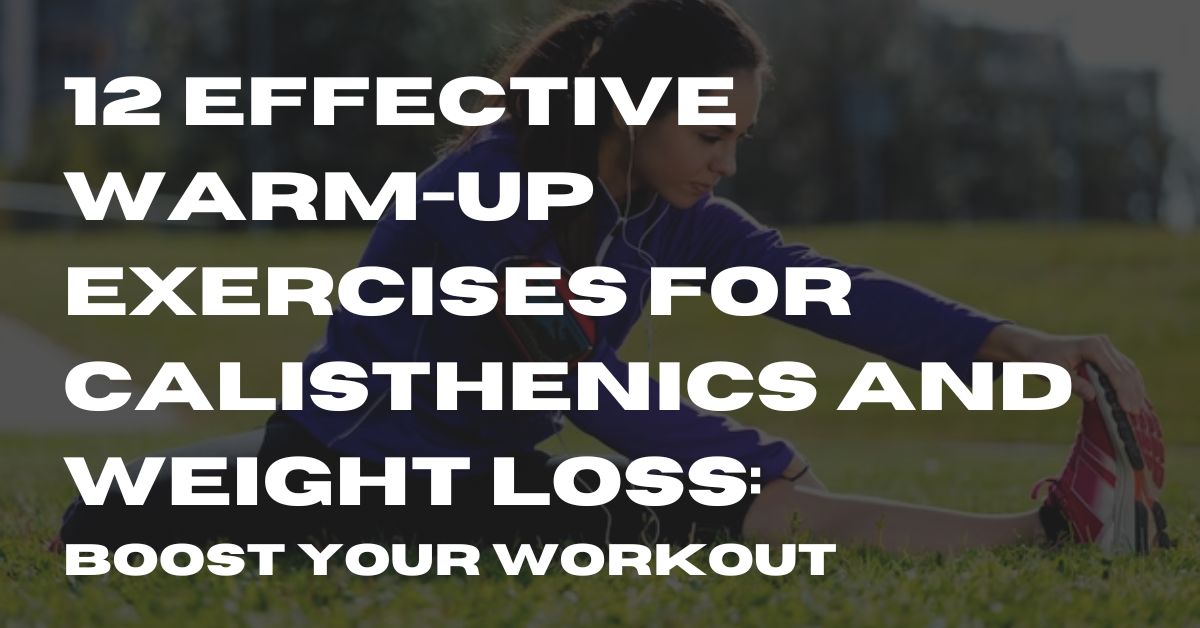
7 thoughts on “11 Best Warm-ups for Calisthenics & Weight Loss ”